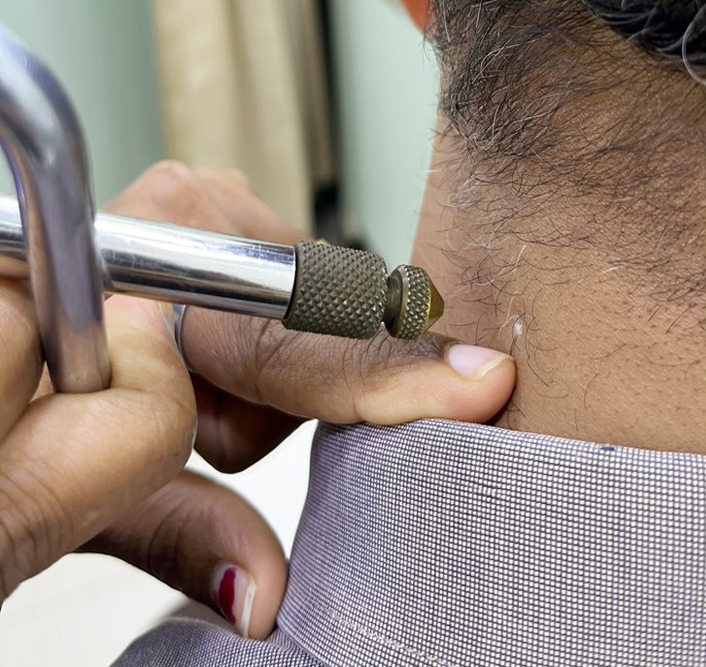Comprehensive Skin Care

White is so pure and white articles or structures look so magnificent. But the minute one sees white patches on the skin, panic ensues. The real anxiety in the family’s mind is whether the white spots are leprosy or leukoderma. What are these conditions? Leprosy is a bacterial infection which affects the skin and nerves. It is associated with loss of sensation and if left untreated, deformities. Leprosy often shows up as pale or flesh-coloured areas with diminished sensation. The number of cases of leprosy has come down in recent times.
Vitiligo is a relatively common disorder presenting with ivory-white patches in contrast to the pale patches in leprosy. The basic problem here is that the melanocytes (the pigment-producing cells in the skin and hair) stop functioning partially or completely. This leads to white appearing skin and hair in affected areas. In most cases, vitiligo is autoimmune. This means that the body's immunity starts acting against its own melanocytes. The major bugbear is that traditionally Indian culture recognises vitiligo as 'safedkodh', literally meaning 'white leprosy'. So vitiligo is often considered contagious and something that runs in families. Actually, the familial bit is true and having a history of vitiligo in parents or near relatives does increase one's risk of developing it. However the risk is not absolute and cannot be quantified.
Vitiligo does not look very good on pigmented skin like ours. In the very fair-skinned, it is hardly noticed. To the extent, it may show up for the first time after one has gone to a beach and the surrounding skin has tanned.
Pale spots can occur due to a host of reasons apart from leprosy and vitiligo. A couple of common ones deserve mention. Pale rain-drop like spots can be seen in a fungal infection called pityriasisversicolor. Humidity and excessive sweating predispose to versicolor. When children get pale blotchy areas on the face, it could be a low-grade childhood eczema called pityriasis alba. It is commonly believed to be due to vitamin or calcium deficiency, which is not true. Other myths surrounding pale spots are 'worms in the tummy' and 'eating incompatible foods like milk and sour foods or milk and fish together’. If pityriasis alba does not fade away by around 3 months, it may be worthwhile consulting a dermatologist.
Beware of so-called guaranteed cures for vitiligo. There is no sure-fire way to eradicate vitiligo and to prevent its spread. But it can be helped to a great extent, particularly when treatment is instituted in the early stages. Applications of corticosteroid creams and some newer immune response modifiers can be helpful. Exposure to narrow-band UVB light is effective not only in bringing back colour, but also controls spread. It is safe even in pregnant women and children. Excimer laser is a focussed high intensity beam of narrow band UVB light. It is particularly appealing for smaller areas. Concealing the areas using waterproof camouflaging creams does a lot to boost self-esteem until treatment kicks in or for unresponsive areas. Small areas of vitiligo can be treated surgically, provided they have been stable for at least a year. But the biggest fight facing vitiligo is against our mindset.